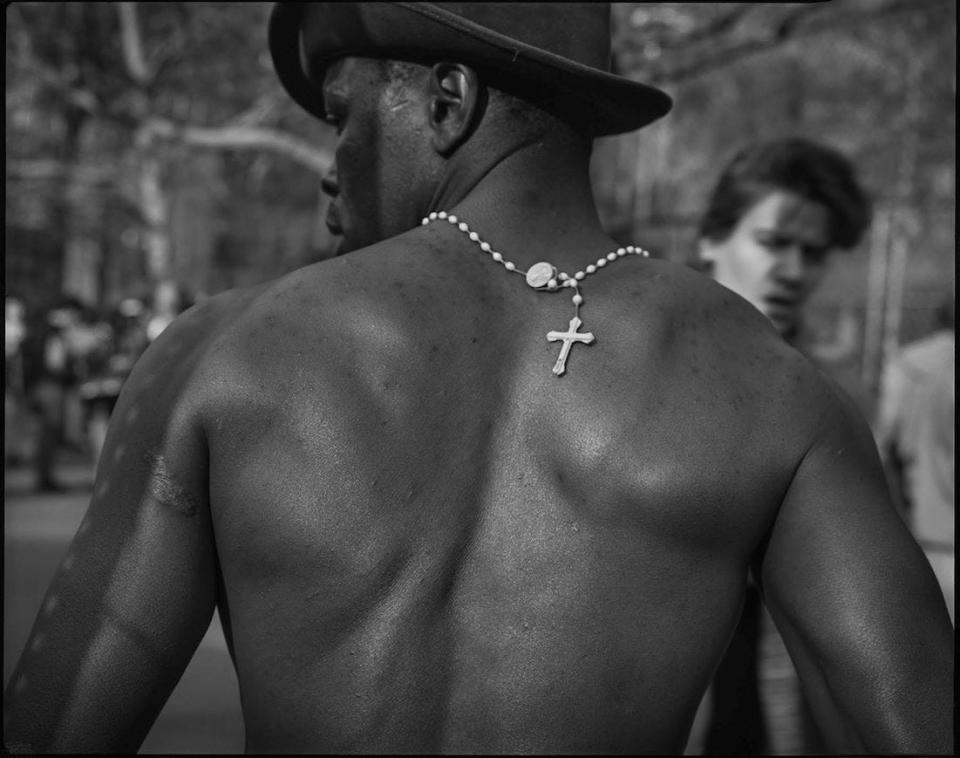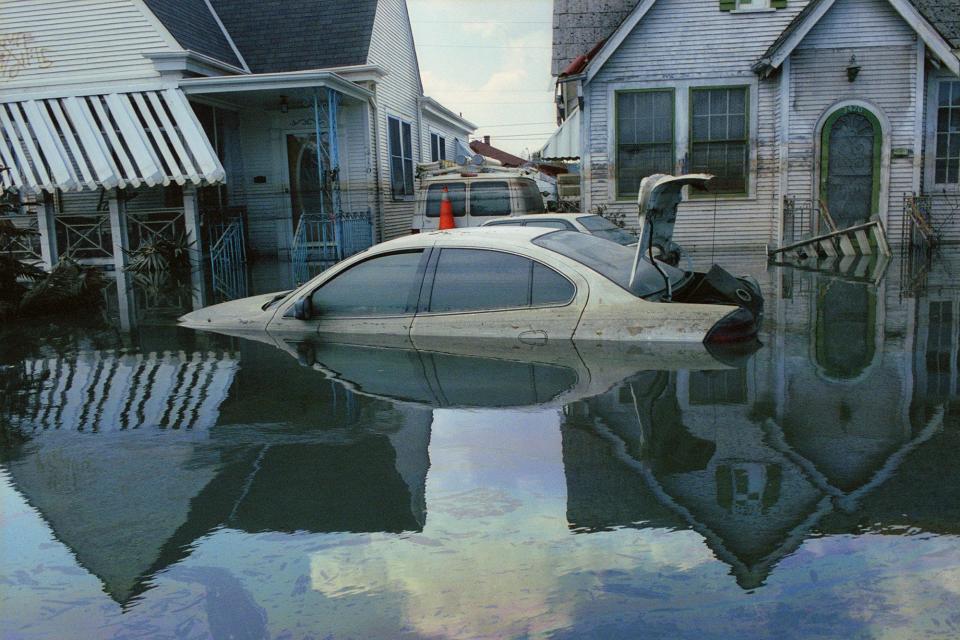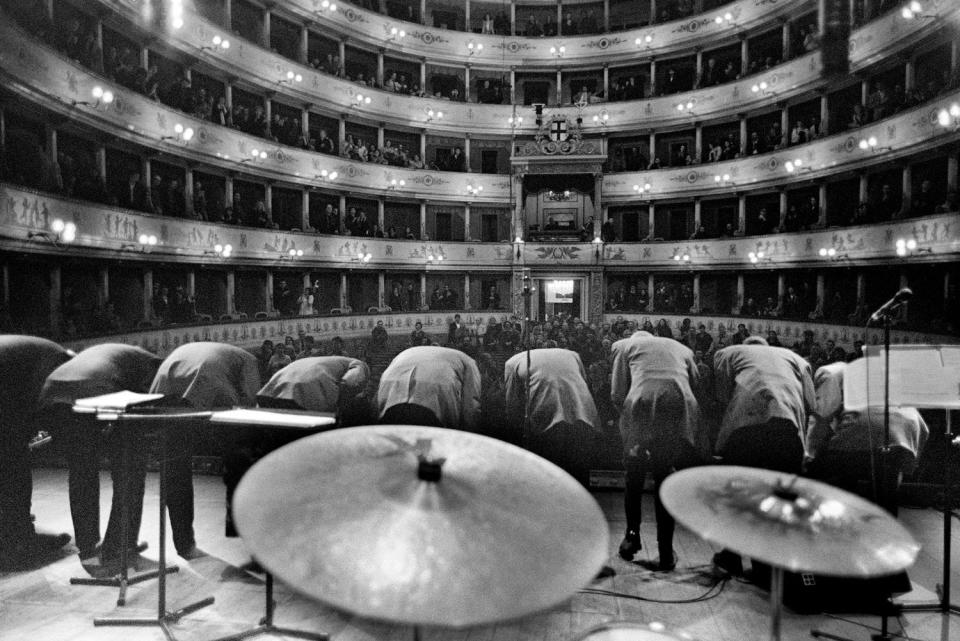Jepson's exhibition of Frank Stewart photographs illuminates his painter's eye, jazz fluidity

“I want every photograph to tell its own story,” says photographer Frank Stewart, whose career retrospective, “Frank Stewart's Nexus: An American Photographer's Journey, 1960s to the Present,” opens Feb. 9 at Telfair Museums' Jepson Center. “The camera tells the story. The photographer chooses what to shoot, but the camera tells the story.”
This retrospective is the first major museum exhibition of Stewart's work, and it is a monumental achievement by a peripatetic artist whose insightful, perceptive eye and singular vision informs every story he captures. The show was co-organized by the Phillips Collection in Washington, D.C. along with Telfair Museums and curated by Ruth Fine, formerly of the National Gallery of Art in D.C., and Fred Moten, poet, scholar, and professor of performance studies at NYU's Tisch School of Fine Arts.

Frank Stewart: 'You never got the history of your culture'
Through more than 100 black-and-white and color images of varying size and scale, the exhibition charts Stewart's lifelong artistic journey over six decades of globetrotting and culture spotting. The photographs are organized thematically and chronologically into a sort of visual autobiography of the people and places Stewart has encountered in his travels throughout America, Africa, Cuba and all points in between. The overarching theme is his investigation into the different modes of expression of African American culture across the world. Whether it's music, or food, or art, or dance, or celebration, or devastation, Stewart trains his lens at the culture he was steeped in as a child and attempts to connect the dots through time and space.
“Growing up in the segregated South, you never got a history of your culture,” says Stewart. “The culture was all around all the time and it was such a vibrant culture at that time because everybody was together. The doctors and lawyers and pimps and hustlers—everybody lived together in the same neighborhood. So the culture was thick. It was rich. Food, language, dance, music. It was all there. So I always wondered, where did all this come from?”
“There was no history of African Americans except that there was some slaves. And if you didn't know, you wouldn't make the connection that you were part of that slave trade... So I went to Africa early in my career and I went back a lot after that.”
“They erased the culture from the people who came through the Middle Passage from the west coast of Africa, so they had to come up with a whole new culture. That's what it's about. It's about that new culture that came into existence. And that's what I'm keenly aware of and trying to tap into—the music and the polyrhythms of that new culture... It's about the journey of connecting the dots of the culture.”

Photographer started with the March and a Kodak Brownie camera
Stewart was born in Nashville, Tennessee, and grew up in Memphis, and then later in Chicago. His first photos were taken of the March on Washington for Jobs and Justice in 1963 with his mother's Kodak Brownie camera when he was 14. This began a life-long love affair with the medium that Stewart continues to stretch and experiment with.
Stewart's life is a who's-who of African American art and music, with a particular emphasis on jazz culture. His stepfather was the famed jazz pianist Phineas Newborn Jr. who played with Count Basie at the original Birdland, and at around 7 or 8 years old Stewart would hang out with the band between sets, becoming something of mascot for the group.
He studied photography at the Art Institute of Chicago, where he was taught by Garry Winogrand, and then whet to Cooper Union where he earned a BFA and was mentored by the famed Roy DeCarava. He worked for The Chicago Defender for some time and then became a stringer for Ebony Magazine. For the past three decades, he's been the senior staff photographer for Jazz at Lincoln Center, where he's forged a deep bond with trumpeter and Artistic Director Wynton Marsalis, whom Stewart considers a brother. He was also the first artist-in-residence at the Studio Museum in Harlem where he tutored burgeoning Black artists like a young Carrie Mae Weems.
Stewart also developed an enduring friendship with the artist Romare Bearden throughout the 13-year period before Bearden's death in 1988. Bearden's influence on Stewart's work is most evident in later photographs where Stewart has veered toward abstraction and he credits Bearden with helping him to connect some of those dots in the culture.
Whether its a moody photo of Miles Davis in the green room looking like a Black Christ, or youth frolicking in the streets of Harlem, or a jazz saxophone player saturated in red, or the call and response of drummers and dancers in Côte d'Ivoire, or Castro in Cuba, or the aftermath of Katrina on Black churches in New Orleans, there's a thread running through Stewart's work that ties everything together.

'The territory is the territory'
“I don't know anyone who has as wide a range of subjects,” says co-curator Ruth Fine. “The work is very complex because at all times he's dealing with the nature of the photographic medium and the subject and how they interact with each other. I think he's very special in that respect.”
Stewart has a painter's eye with the camera and a jazz musician's fluidity with the subjects he's in concert with. Unlike many photographers, he doesn't crop his photos after the image is taken, so he's constantly visually composing and using his flash as a paintbrush.
“You have to know how to compose and build a space before you even click the shutter,” says Stewart. “Reality is one fact, but a photograph is another fact—a totally different fact. That's part of the intelligence of the medium. There are two facts in play when you take a picture.”
Stewart says he's a purist in his approach to photography in the way he lets the camera tell the story. He explains that a photo is just a map of reality, not reality itself. The photo creates its own reality.
“The map is not the territory,” says Stewart. “The territory is the territory.”
That territory is transcendently evident in images like “God's Trombones,” which depicts a glorious sea of trombone players all dressed in white, or a partially submerged car with a speaker in the open trunk in “Katrina's Houses.” But there's also a story behind each story.
“One of my favorite parts of this exhibition is that the label text for the show is just Frank telling you about the photo,” says Telfair Museums Curator of Modern and Contemporary Art, Erin Dunn. “He's able to bing so many aspects of who he is as a person into this medium.”
It should also be noted that Stewart has an abiding connection to Savannah due to the fact that he's been coming to the city for the past 25 years to photograph the Savannah Music Festival. He worked with former SMF director Rob Gibson when Gibson was the director at Jazz at Lincoln Center. When Gibson transitioned to Savannah, he asked Stewart to photograph the festival and Stewart has been coming back ever since.
“It's been a good 25 years,” says Stewart. “I know more people in Savannah than I do in D.C. [where the exhibition first opened]. I know damn near the whole town in Savannah.”
Stewart says he's looking forward to the reception on Feb. 8 and the subsequent celebration that's sure to ensue. “The city is so beautiful and it reminds me so much of growing up in Memphis. It also has a New Orleans flare. The food is great. The weather is great. I always look forward to coming there.”
Frank Stewart's Nexus: An American Photographer's Journey, 1960s to the Present, on view until May 12, 2024, at Telfair Museum's Jepson Center, 207 W. York St. For more information, go to telfair.org.
This article originally appeared on Savannah Morning News: Telfair Museums Jepson Center mounts Photographer Frank Stewart's first exhibition

